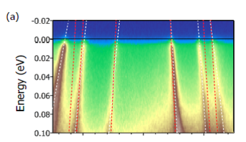The Iron Age: about the understanding of the new iron-based high-temperature superconductors and related compounds
Similar to the copper-based high-temperature superconductors, in the new iron-based superconductors (FeSC), superconductivity occurs close to an antiferromagnetic phase. This indicates that correlation effects may be important in these materials. Theoretical calculations predict that different from cuprates, besides the on-site Coulomb interaction also the on-site Hund exchange interaction plays an important role in the correlation effects of FeSCs. This would mean that a completely new state of correlated matter has appeared which has been termed “Hund’s metal”. One of the present exciting challenges in solid state physics is to understand this new ground state in the normal state and its transition into a superconducting state at low temperatures.
Scientists from the Max Planck Institute for Chemical Physics of Solids and from the Leibniz Institute for Solid State and Materials Research, both in Dresden, Germany, have studied correlation effects in two pnictide compounds, the non-superconducting BaCr2As2 and the closely related high-temperature superconductor Ba1-xKxFe2As2. They used Angle Resolved Photoemission Spectroscopy to determine the effective mass and the scattering rate of the charge carriers in these materials. These experimental data provide information on the strength of correlation effects. The experiments showed that the correlation effects are strong in the iron compound while they are weak in the chromium compound. The results strongly support the theoretical predictions that correlation effects related to Hund’s exchange interaction plays an important role in the iron-based superconductors. With this work the collaboration has contributed important results to the understanding of the electronic properties of iron-based high-temperature superconductors and their Hund’s metal behavior in the normal state.
JF/ IFW and MPI CPfS

ARPES results on the band dispersion of three hole pockets in BaCr2As2, marked by white dashed lines together with corresponding theoretical results (red dashed lines). From the slopes at the Fermi energy (Energy =0) one derives the mass enhancement while from the width of the bands one derives the scattering rate.












